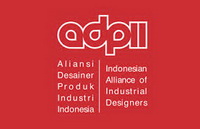Hierarchical Task Analysis dalam pengembangan gagasan produk
Abstract
Human, have been claimed to be central in a world perspective and bring an another investigating in design science. One of the process development in the design process is using Hierarchy Task Analysis (HTA) for idea development through task analysis. This method constituted from interdisciplinary science between industrial design and ergonomic. In the process, HTA has been adjusted and developed for the design process requirement. This condition affects the process analysis and format of the HTA. The paradigm shift, give more access for a designer to addresses idea development. Furthermore, Human activities, how they do it, using what and what kind of problems that can happen is going focused on user interaction with the product. All of these analysis and idea development is conducted using scheme and sketches. The result of ideas sketches to be able to work on next step process, for example, work on paper models or clay models. The result of ideas sketches to be able to continue work on next step process, for example, product existing analysis and work on modells. Research and developing HTA method for product design had the use of action research approach. This process engages lecturer and student as a user of HTA method. Through this approach, be able to found appropriateness HTA method which solves provided a problem. The result of HTA development has a benefit for a student as a one of planning and product development to arise a product based on ergonomic.
Key words: product design, Hierarchy Task Analysis (HTA), ideation, design process, ideas sketches
Full Text:
PDF (Bahasa Indonesia)References
Arnett, J. (2003). Hierarchical Task Analysis. In E. Hollnagel (Ed.), Handbook of Cognitive Task Design (pp. 17–35). New Jersey: Erlbaum Mahwah. https://doi.org/10.1017/CBO9781107415324.004
Arnett, J. (2005). Hierarchical Task Analysis (HTA). In N. Stanton, A. Hedge, K. Brookhuis, E. Salas, & K. Hendrick (Eds.), Handbook of Human Factors and Ergonomics Methods (pp. 33-1-33–7). Florida: CRC Press.
Jones, J. C. (1970). Design Methods. Hertfordshire: John Willey & Sons Ltd.
Lockton, D., Harrison, D., & Stanton, N. (2010). The Design with Intent Method : A design tool for influencing user behaviour. Applied Ergonomics, 41, 382–392. https://doi.org/10.1016/j.apergo.2009.09.001
Mollerup, P. (2001). Collapsible. San Fransisco: Chronicle Books LLC.
Sebillotte, S. (1988). Hierarchical Planning as Method for Task Analysis: the Example of Office Task Analysis. Behaviour and Information Technology. Behaviour and Information Technology, 7(3), 275–293.
Somekh, B. (2008). Action Research. In L. M. Given. (Ed.), The Sage Encyclopedia of Qualitative Research Methods (pp. 4–6). California: SAGE Publications, Inc.
Stanton, N. (2006). Hierarchical task analysis: Developments, applications, and extensions. Applied Ergonomics, 37, 55–79. https://doi.org/10.1016/j.apergo.2005.06.003
Stanton, N., Salmon, P. M., Rafferty, L. A., Walker, G. H., Baber, C., & Jenkins, D. P. (2013). Human Factor Methods: A Practical Guide for Engineering and Design. Farnham: Ashgate Publishing Limited.
Stanton, N., & Young, M. S. (1999). A Guide to Methodology in Ergonomics. New York: Taylor & Francis Inc.
DOI: https://doi.org/10.24821/productum.v3i4.2239
Refbacks
- There are currently no refbacks.
p-ISSN 2477-7900 | e-ISSN 2579-7328

This work is licensed under a Creative Commons Attribution 4.0 International License.
Like & Follow Us










